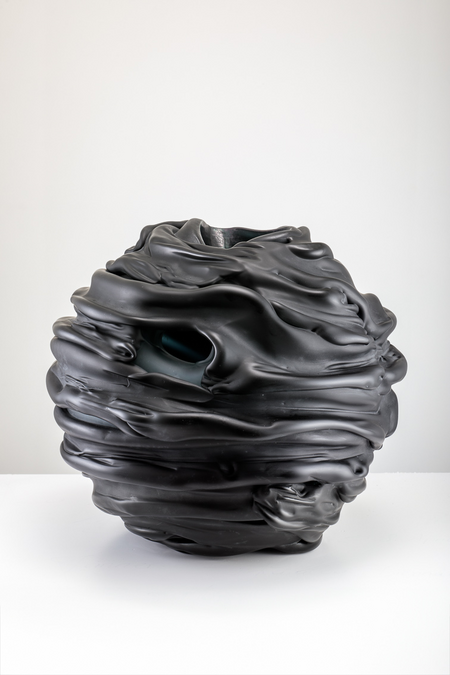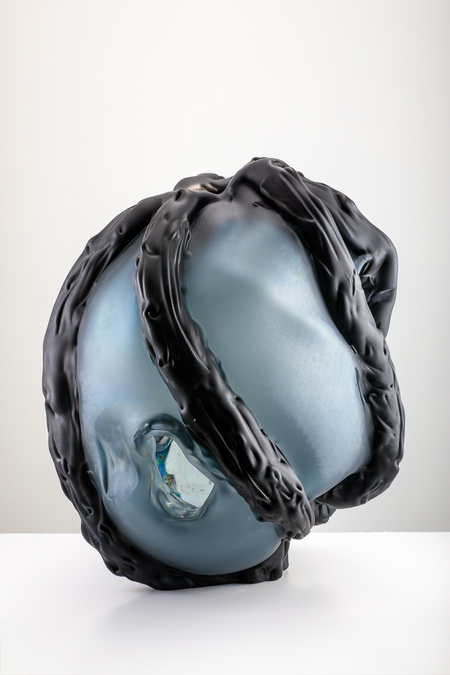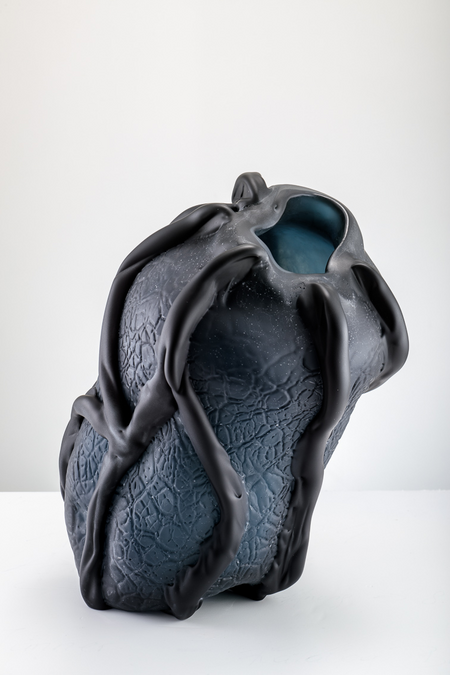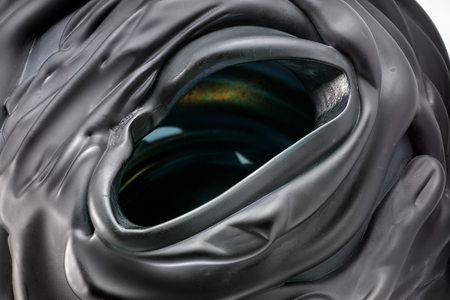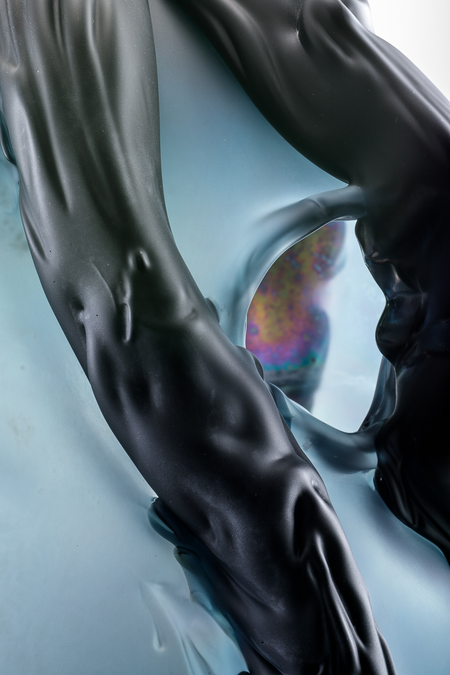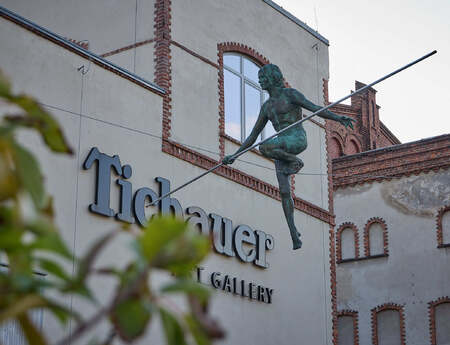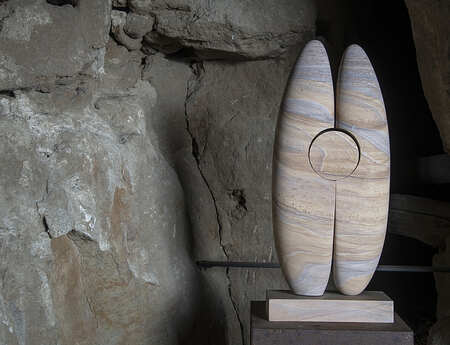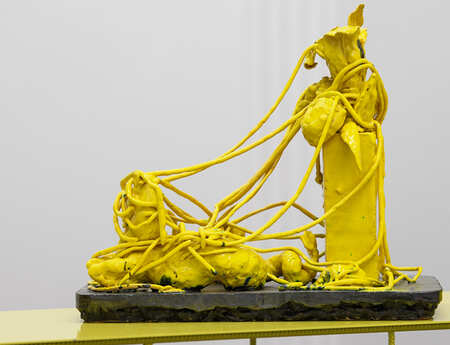Janine Thungen-Reichenbach
#TheMagicOfGlass
Palazzo Loredan sede dell'Istituto Veneto di Scienze, Lettere ed Arti, San Marco 2945
30124 Venice
Italy
The Venice Glass Week
The Venice Glass Week is an international festival founded in 2017 to celebrate, support and promote the art of glassmaking, for which the Lagoon City of Venice has been renowned around the world for over 1,000 years. The ninth edition of the festival will take place from 13th to 21st September 2025.
The Venice Glass Week is promoted and organised by Comune di Venezia, Fondazione Musei Civici di Venezia, LE STANZE DEL VETRO – Fondazione Giorgio Cini, Istituto Veneto di Scienze, Lettere ed Arti and Consorzio Promovetro Murano.
For further information, visit theveniceglassweek.com
Ocean Bark
My latest sculptures in the Ocean Bark series begin their journey in Murano, where a master glassblower creates each sphere. After the glass receives its bark texture, I open the still-hot spheres at strategic points, revealing a delicate, shimmering interior that echoes water itself.
It's these contrasts that captivate me: inside and outside, soft and rough, death and life, ocean and land.
- Ocean Bark 1 carries the impression of Pinus Pinaster
- Ocean Bark 2 bears the mark of Cupressus
- Ocean Bark 3 holds the memory of Quercus suber
Each sculpture is utterly unique—there will not and cannot be another exactly like it. Just as every tree, and every person, exists only once in this world.
The Silent Embrace: My Journey with Trees
Directly in front of my studio stands a majestic eucalyptus, over one hundred and fifty years old. Every time I look up at it from my window, it seems as if it wants to embrace me with its two strong arms stretched skyward—just as I embrace it or confide my thoughts to its ancient presence. Our silent exchange brings to mind Saint-Exupéry's words: "and I know a tree, unique in the world, that exists nowhere else but on my planet." (He was, of course, speaking of his rose.)
Trees inspire me. Each one is utterly unique. There are more than 3 trillion trees in our world—we need them to survive, yet they don't need us.
From Bark to Art: The Process
The circumference of a tree trunk, measured at about 1.4 meters from the ground, reveals its approximate age. This is where I place my silicone to capture the imprint of each tree's bark. Each impression begins as a negative—a window looking into the tree's soul.
My first series of negative impressions came from trees along the Via Appia Antica, where I live. I've shaped these into spheres of varying sizes that resemble planets, complete with craters, incisions, and organic bulges.
These "tree worlds" take many forms: some are cast in bronze or glass, others remain in silicone or transform into cement. The process often creates unexpected openings, inviting both eye and hand to discover the delicate, smooth interior within.
